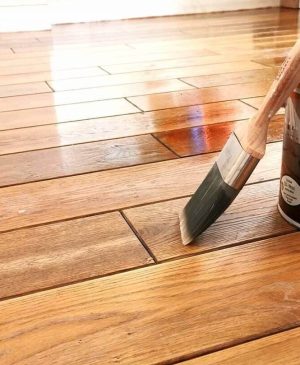When it comes to creating a stunning outdoor space, gardeners are often faced with the age-old debate: Should they focus on plants or flowers? While the two terms are often used interchangeably, they each serve distinct purposes in the garden. Understanding the difference between the two and how each can enhance the outdoor environment is key to creating a thriving, visually captivating garden. In this article, we’ll explore the benefits and drawbacks of both plants and flowers, offering insights into how to best integrate them into your gardening projects.
The Power of Plants: More Than Just Greenery
Plants, in a broad sense, refer to any living organisms in the plant kingdom that produce oxygen and serve as the backbone of any garden or landscape. This includes trees, shrubs, grasses, and ground covers. While flowers are often the star attraction in a garden, plants, as a whole, are the foundational elements that provide structure, texture, and balance.
One of the primary advantages of incorporating plants into your garden is their year-round appeal. Many plants, especially evergreen varieties, provide consistent foliage throughout all seasons. They serve as a backdrop for other flowers or decorative elements, ensuring the garden remains vibrant even when blooming flowers have faded. For instance, a well-placed evergreen shrub can help provide privacy, create natural borders, and offer shelter for wildlife during colder months when other plants may be dormant.
Moreover, plants like trees and shrubs can provide much-needed shade, reducing the temperature of the surrounding area and helping conserve water by preventing evaporation. This makes them invaluable in sustainable gardening, where the goal is often to create a low-maintenance, eco-friendly outdoor space.
The structural integrity that plants bring to a garden can also help establish a more organized and harmonious space. Whether through tall trees that create a canopy, shrubs that define pathways, or ornamental grasses that add movement to the landscape, plants can introduce a sense of rhythm and dimension to the design. Additionally, plants can be used to create natural fences, windbreaks, or even to act as sound barriers, providing privacy and comfort.
However, the drawback of focusing heavily on plants is that, without the bursts of color that flowers provide, the landscape can occasionally feel monotonous or static. This is why integrating flowering plants or seasonal flowers can elevate the garden, creating a dynamic, ever-changing aesthetic.
The Magic of Flowers: Color, Fragrance, and Focal Points
Flowers, by definition, are the reproductive structures of flowering plants, and they hold immense value in the world of gardening. Flowers bring undeniable beauty and sensory appeal to a garden. Their colors, patterns, fragrances, and shapes contribute to a multisensory experience that attracts pollinators, enhances visual interest, and can even boost our mood.
In addition to the aesthetic beauty they bring, flowers serve a vital ecological role. They are essential for pollinators like bees, butterflies, and hummingbirds, which rely on them for food. In fact, many flower species are cultivated with the specific goal of attracting pollinators to the garden, thereby contributing to the larger environmental ecosystem. Furthermore, flowers are integral to the lifecycle of many plants, as they allow for cross-pollination, leading to the production of fruits, seeds, and new generations of plants.
Flowers can also be highly versatile in a garden. Whether in flowerbeds, hanging baskets, window boxes, or as part of larger plant arrangements, they add a dynamic pop of color that can be easily changed with the seasons. Tulips, daffodils, and crocuses herald the arrival of spring, while chrysanthemums and asters bring warmth to the fall landscape. Their blooms can be timed to ensure a steady progression of color throughout the year, with the added benefit of attracting a variety of wildlife.
Another benefit of flowers is their ability to serve as focal points in the garden. The striking beauty of a well-placed flower bed or an arrangement of vibrant flowers can draw attention and set the tone for the entire outdoor space. For example, a rose bush in full bloom or a vibrant cluster of lavender can serve as a stunning centerpiece, anchoring the garden’s visual appeal. Flowers also add texture and depth to a design, as different varieties offer unique forms—from the delicate petals of a pansy to the bold, sculptural presence of an orchid.
However, flowers do come with a set of challenges. Unlike plants that offer year-round interest, flowers often have a limited blooming period. Once their season is over, they may require more maintenance or attention, including pruning, deadheading, or replacing them with new blooms to keep the garden looking fresh. Additionally, flowers can be more susceptible to pests and diseases than hardy plants, requiring more vigilance and care.
The Art of Combining Plants and Flowers in the Garden
The most successful gardens often combine both plants and flowers in a balanced and thoughtful manner. A garden that features only flowers can become overwhelming and chaotic, especially if the blooms are too dense or cluttered. Likewise, a garden that focuses solely on plants may lack the vibrancy and excitement that flowers naturally provide.
A harmonious blend of the two can achieve the best of both worlds. Plants like trees, shrubs, and grasses form the garden’s framework and structure, offering support, shade, and privacy. Within this structure, flowers can serve as seasonal accents, adding color and fragrance during the appropriate times of year. A smart design might incorporate evergreen plants for year-round structure, while seasonal flowers fill in the gaps to provide color at different times.
The key to a well-balanced garden lies in understanding the roles that both plants and flowers play. Consider the texture and form of plants, and contrast these with the ephemeral beauty of flowers. A lush, green fern might pair beautifully with bright red geraniums, or tall sunflowers could be the perfect complement to a low-growing ground cover like ivy. Grouping flowers and plants based on their respective needs—light, water, and soil conditions—ensures that the entire space thrives.
Conclusion: What Works Best?
So, which works best in gardening: plants or flowers? The answer is neither. Rather than choosing between the two, the most successful and sustainable gardens embrace the strengths of both. Plants provide structure, stability, and year-round interest, while flowers add bursts of color, fragrance, and seasonal charm. By combining the versatility of plants with the beauty of flowers, gardeners can create outdoor spaces that are not only visually pleasing but ecologically beneficial and manageable. Ultimately, the choice between plants and flowers isn’t a matter of one being better than the other, but of how to use them together to craft a harmonious, thriving garden that reflects both beauty and functionality.


















